| Home
About
A Health Perspective
My Story
My WAPF Chapter
Disclaimer
Foods That Restore This I Believe Articles and More Email Me Follow My Blogs |
||||||||||||||||||||||||||||||||||||||||||||||||||||||
 |
||||||||||||||||||||||||||||||||||||||||||||||||||||||
|
||||||||||||||||||||||||||||||||||||||||||||||||||||||
| Follow my health giving blog posts
at "Tips From The Traditional Cook". |
||||||||||||||||||||||||||||||||||||||||||||||||||||||
| Home
About
A Health Perspective
My Story
My WAPF Chapter
Disclaimer
Foods That Restore This I Believe Articles and More Email Me Follow My Blogs | ||||||||||||||||||||||||||||||||||||||||||||||||||||||
|
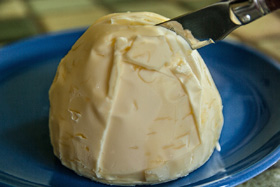
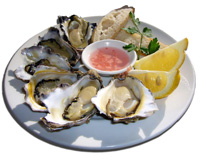 Of all the shellfish, oysters are the most prized, not only by modern epicures and patrons of oyster bars, but also by traditional peoples throughout the globe. In fact, mollusks like oysters were probably one of the most important foods for the hunter-gather–easy to collect and full of nutrients.
Of all the shellfish, oysters are the most prized, not only by modern epicures and patrons of oyster bars, but also by traditional peoples throughout the globe. In fact, mollusks like oysters were probably one of the most important foods for the hunter-gather–easy to collect and full of nutrients. 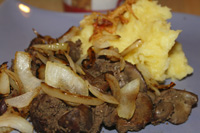 So what makes liver so wonderful? Quite simply, it contains more nutrients, gram for gram, than any other food. In summary, liver provides:
So what makes liver so wonderful? Quite simply, it contains more nutrients, gram for gram, than any other food. In summary, liver provides: 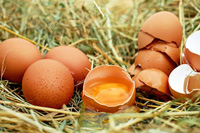 Without a doubt, fresh, pastured eggs are superior in taste and nutrition to conventionally raised commercially available varieties. Eggs have been a highly valued foods since the beginning of time—eggs from chickens, ducks, geese, turtles and fish.
Without a doubt, fresh, pastured eggs are superior in taste and nutrition to conventionally raised commercially available varieties. Eggs have been a highly valued foods since the beginning of time—eggs from chickens, ducks, geese, turtles and fish. 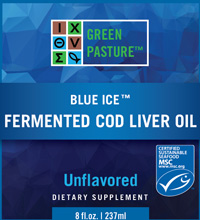 Cod liver oil is also rich in eicosapentaenoic acid (EPA) and docasahexaenoic acid (DHA). The body makes these fatty acids from omega-3 linolenic acid. EPA is as an important link in the chain of fatty acids that ultimately results in prostaglandins, localized tissue hormones while DHA is very important for the proper function of the brain and nervous system.
Cod liver oil is also rich in eicosapentaenoic acid (EPA) and docasahexaenoic acid (DHA). The body makes these fatty acids from omega-3 linolenic acid. EPA is as an important link in the chain of fatty acids that ultimately results in prostaglandins, localized tissue hormones while DHA is very important for the proper function of the brain and nervous system. 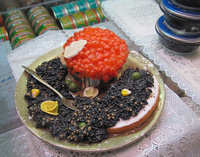 Otherwise called Caviar - Few people talk about the health benefits of eating roe–Weston A. Price is virtually unique in his insistence on the value of this superfood (although the French value caviar as an aphrodisiac).
Otherwise called Caviar - Few people talk about the health benefits of eating roe–Weston A. Price is virtually unique in his insistence on the value of this superfood (although the French value caviar as an aphrodisiac).  There are many health benefits to consuming raw milk. Early studies showed that children consuming raw milk had greater resistance to disease, better growth and stronger teeth than children consuming pasteurized milk. Animal studies indicate that raw milk confers better bone structure, better organ development, better nutrient assimilation, better fertility and even better behavior than pasteurized milk
There are many health benefits to consuming raw milk. Early studies showed that children consuming raw milk had greater resistance to disease, better growth and stronger teeth than children consuming pasteurized milk. Animal studies indicate that raw milk confers better bone structure, better organ development, better nutrient assimilation, better fertility and even better behavior than pasteurized milk 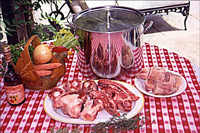 A cure-all in traditional households and the magic ingredient in classic gourmet cuisine, stock or broth made from bones of chicken, fish and beef builds strong bones, assuages sore throats, nurtures the sick, puts vigor in the step and sparkle in love life–so say grandmothers, midwives and healers. For chefs,
A cure-all in traditional households and the magic ingredient in classic gourmet cuisine, stock or broth made from bones of chicken, fish and beef builds strong bones, assuages sore throats, nurtures the sick, puts vigor in the step and sparkle in love life–so say grandmothers, midwives and healers. For chefs, 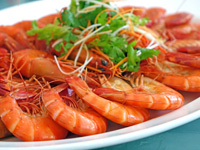 Shrimp are a very good source of vitamin D–the sunshine vitamin–and it seems almost miraculous that they should swim into fishing range at just the time when we could use a good dose of this nutrient. Shrimp are also rich in protein, and the important trace mineral selenium, as well as other minerals, and vitamin B12. This
Shrimp are a very good source of vitamin D–the sunshine vitamin–and it seems almost miraculous that they should swim into fishing range at just the time when we could use a good dose of this nutrient. Shrimp are also rich in protein, and the important trace mineral selenium, as well as other minerals, and vitamin B12. This 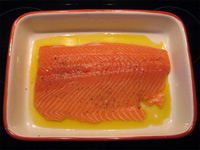 Two families of essential fatty acids (EFAs)–the omega-6 and the omega-3 fatty acids–are vital nutrients for growth and development. They cannot be made by the body so must be obtained in the diet. (In general, levels of omega-6 fatty acids in the modern diet are too high, while omega-3 fatty acids are lacking.) Two excellent sources of omega-3s are oily fish from cold northern waters and leafy green vegetables. According to some authorities, salmon is the primary animal source of omega-3 fatty acids. See more
Two families of essential fatty acids (EFAs)–the omega-6 and the omega-3 fatty acids–are vital nutrients for growth and development. They cannot be made by the body so must be obtained in the diet. (In general, levels of omega-6 fatty acids in the modern diet are too high, while omega-3 fatty acids are lacking.) Two excellent sources of omega-3s are oily fish from cold northern waters and leafy green vegetables. According to some authorities, salmon is the primary animal source of omega-3 fatty acids. See more 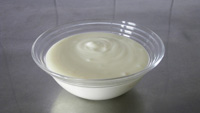 Fermented beverages infuse the gut with lactobacilli and lactic acid to sustain their growth, as well as serve up a nice array of enzymes and nourishing minerals. Traditional populations knew that these effervescent drinks were more hydrating and thirst-quenching than even water.
Fermented beverages infuse the gut with lactobacilli and lactic acid to sustain their growth, as well as serve up a nice array of enzymes and nourishing minerals. Traditional populations knew that these effervescent drinks were more hydrating and thirst-quenching than even water.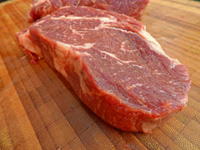 What a shame we have demonized red meat because this is one modern food, enjoyed by almost everybody, that is rich in nutrients. Red meat provides complete protein, including sulphur-containing proteins like cysteine. Beef is a wonderful source of taurine and carnitine, needed for healthy eyes and a healthy heart. Beef also provides another key nutrient for the cardiovascular system—coenzyme Q10.
What a shame we have demonized red meat because this is one modern food, enjoyed by almost everybody, that is rich in nutrients. Red meat provides complete protein, including sulphur-containing proteins like cysteine. Beef is a wonderful source of taurine and carnitine, needed for healthy eyes and a healthy heart. Beef also provides another key nutrient for the cardiovascular system—coenzyme Q10. 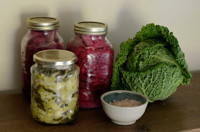 Wonder foods that are fermented (not pickled in vinegar) may help protect against infections and fungi. Fermented foods and beverages also provide fiber, which aids digestion and could help prevent serious digestive disorders that may be the root cause of many illnesses. As described in
Wonder foods that are fermented (not pickled in vinegar) may help protect against infections and fungi. Fermented foods and beverages also provide fiber, which aids digestion and could help prevent serious digestive disorders that may be the root cause of many illnesses. As described in 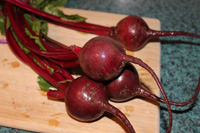 This wondrous vegetable is what is used to make possibly the most healing fermented beverage there is. In the book Nourishing Traditions, the benefits of this drink are described as follows: This drink (beet kvass) is valuable for its medicinal qualities and as a digestive aid. Beets are just loaded with nutrients. One 4-ounce glass, morning and night, is an excellent blood tonic, promotes regularity, aids digestion, alkalizes the blood, cleanses the liver and is a good treatment for kidney stones and other ailments. Beet kvass may also be used in place of vinegar in salad dressings and as an addition to soups . Read more
This wondrous vegetable is what is used to make possibly the most healing fermented beverage there is. In the book Nourishing Traditions, the benefits of this drink are described as follows: This drink (beet kvass) is valuable for its medicinal qualities and as a digestive aid. Beets are just loaded with nutrients. One 4-ounce glass, morning and night, is an excellent blood tonic, promotes regularity, aids digestion, alkalizes the blood, cleanses the liver and is a good treatment for kidney stones and other ailments. Beet kvass may also be used in place of vinegar in salad dressings and as an addition to soups . Read more 